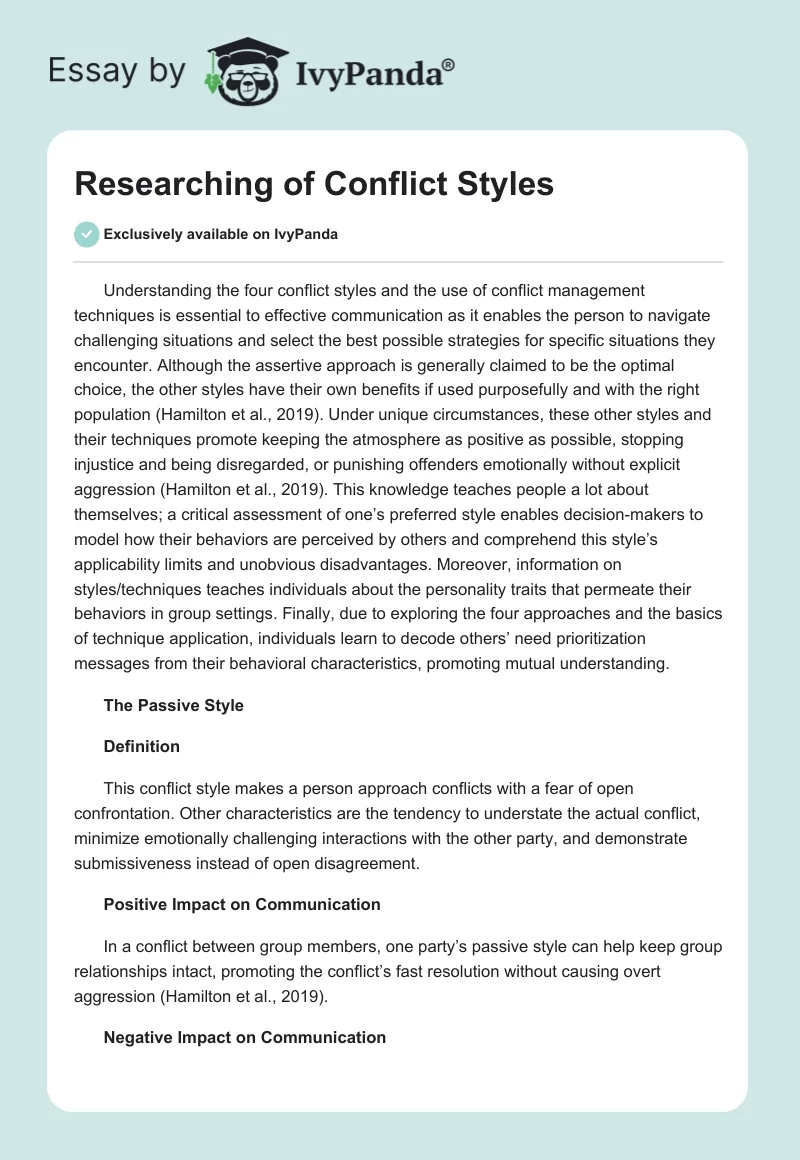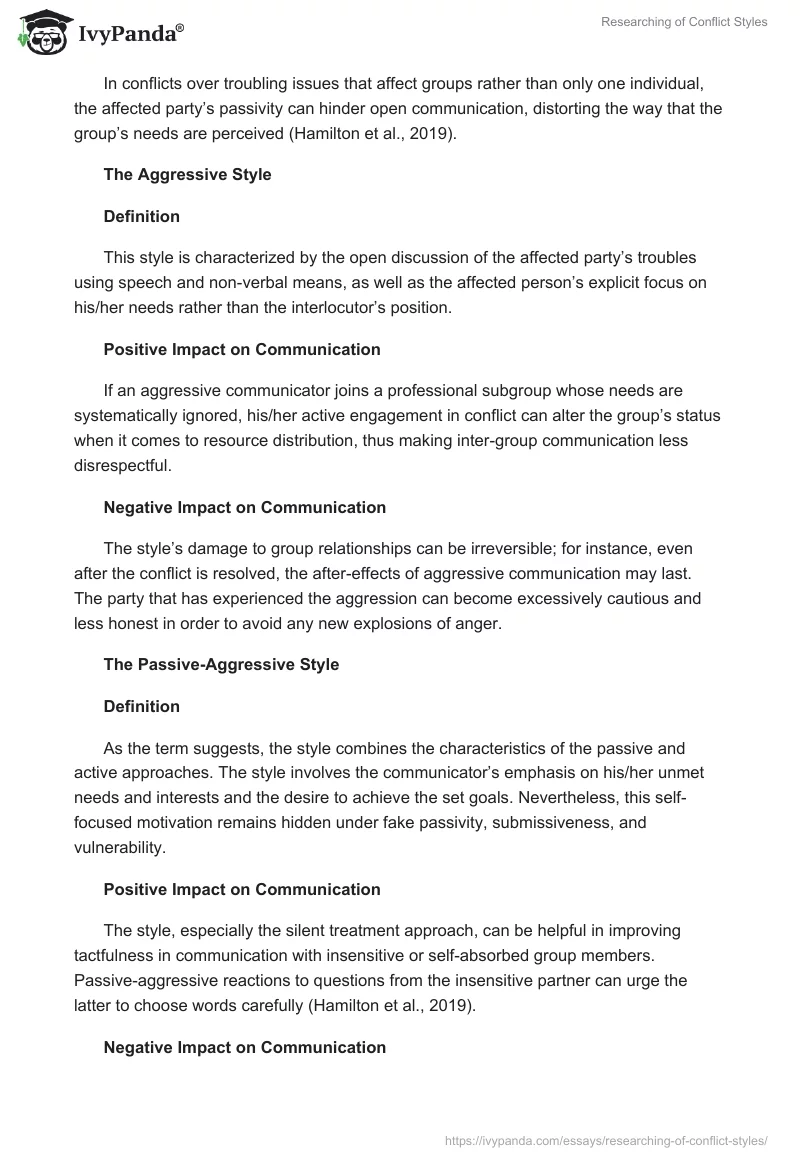Understanding the four conflict styles and the use of conflict management techniques is essential to effective communication as it enables the person to navigate challenging situations and select the best possible strategies for specific situations they encounter. Although the assertive approach is generally claimed to be the optimal choice, the other styles have their own benefits if used purposefully and with the right population (Hamilton et al., 2019). Under unique circumstances, these other styles and their techniques promote keeping the atmosphere as positive as possible, stopping injustice and being disregarded, or punishing offenders emotionally without explicit aggression (Hamilton et al., 2019). This knowledge teaches people a lot about themselves; a critical assessment of one’s preferred style enables decision-makers to model how their behaviors are perceived by others and comprehend this style’s applicability limits and unobvious disadvantages. Moreover, information on styles/techniques teaches individuals about the personality traits that permeate their behaviors in group settings. Finally, due to exploring the four approaches and the basics of technique application, individuals learn to decode others’ need prioritization messages from their behavioral characteristics, promoting mutual understanding.
Reference
Hamilton, C., Creel, B., & Kroll, T. (2019). Communicating for success (2nd ed.). Taylor & Francis.


